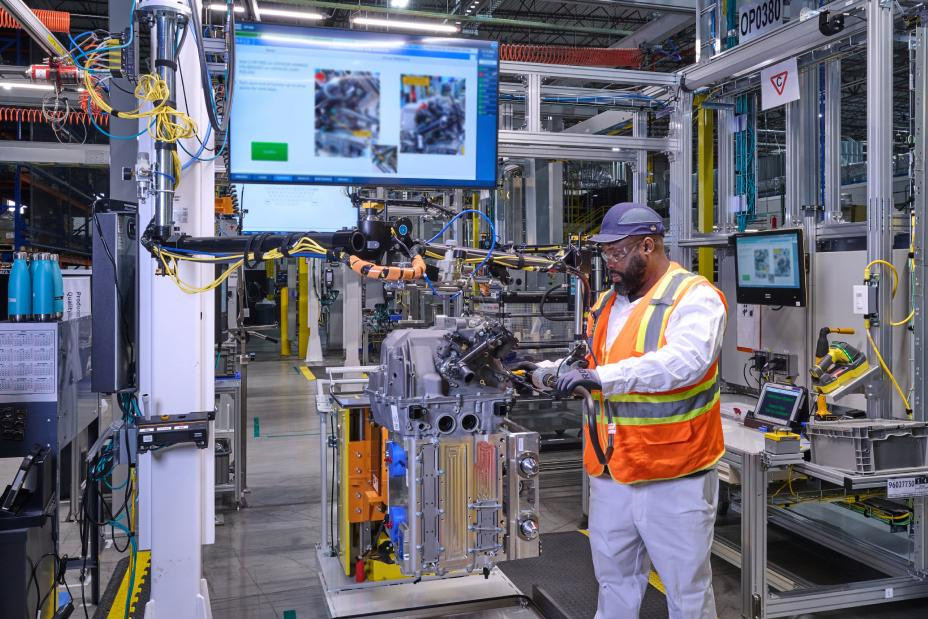Hydrogen fuel cells are one of the key component of General Motors' (GM) electrification strategy, and the company is now collaborating on a solution for low-emissions worksites with its fleet of fuel cell-powered medium duty trucks and supporting infrastructure.
GM's latest fuel cell-related project is a hydrogen-based worksite ecosystem, centered around its fleet of medium duty fuel cell trucks. With funding awarded from the Department of Energy's SuperTruck 3 program and the Hydrogen and Fuel Cell Technologies Office, the company is spearheading a pilot program that demonstrates real life applications of fuel cells for fleet and commercial customers.
The fuel-cell pick-up trucks, underpinning the platform of the 2024 Chevrolet Silverado 5500 MD, are set for field evaluation. They are powered by GM's HYDROTEC' fuel cell systems, offering a driving range greater than 300 miles, with a GVW rating of 8.84 tons. The trucks operate in a native 800V architecture and can produce more than 300 kW peak power.
"These trucks and their accompanying hydrogen infrastructure can help enable a zero-emissions solution for HD and MD truck customers looking to meet their clean energy goals as well as reduce their operational noise and carbon footprint," said Charlie Freese, executive director of global HYDROTEC.

GM-Honda JV starts production of hydrogen fuel cell power solutions
"GM's advanced fuel cell technology gives these trucks a competitive edge against their diesel counterparts, with comparable towing and payload capabilities", he added. The first customer of these hydrogen trucks is the American utility Southern Company, which will use them as shop vehicles at its worksites.
Nevertheless, GM's H2 ambition moves beyond these trucks. Southern Company, together with GM and Nel ASA, will also demonstrate an integrated hydrogen microgrid for fueling infrastructure, including a stationary fuel cell-based mobile power generator.
Electrolyzer firm Nel will be supplying its advanced PEM electrolyzers for the pilot project. GM's fuel cells will help provide power for a 350 kW fast charger for medium-duty battery electric vehicles and resilient power for the site.
This microgrid project is expected to be located at a Georgia power plant. The companies are planning to use their microgrid approach to create green hydrogen at off-peak hours and use it to power the site's operations when grid power is most expensive.
This stacked value system can enable both a more affordable and low-emissions approach, which can improve the economics and resiliency of the installation, they claim.

Nel ASA, GM collaborate on cost competitive Renewable Hydrogen production
Read More

